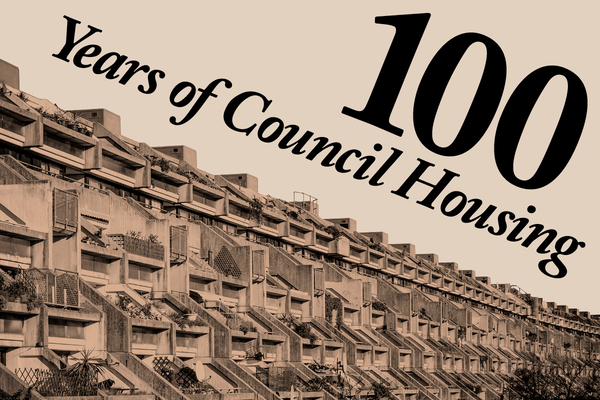You are viewing 1 of your 1 free articles
PWLB rate rise suggests Whitehall still does not trust councils
Allowing housing investment to be treated the same as borrowing to fund infrastructure would show it is isn’t business as usual, writes Jules Birch
The row over the hike in the interest rate for borrowing from the Public Works Loans Board (PWLB) is important in itself but it also raises a more fundamental point about social housing investment.
The rate increase imposed by the Treasury earlier this month seems to have been sparked by concern about councils investing in shopping centres rather than homes, which is ironic given that their rationale is to find new revenue streams to compensate for Treasury-imposed austerity.
However, it reinforces the impression that the government still does not trust councils to invest wisely in housing or anything else.
That view goes way back to 1979, of course, and the borrowing and spending controls that the Thatcher government imposed on council housing along with the Right to Buy.
“Just at the point when research by Inside Housing reveals that councils are ready to scale up their housebuilding, the beancounters have struck again”
But it also recalls the way that the government finally introduced self-financing in April 2012 but accompanied it with caps on borrowing and then undermined business plans by imposing the 1% a year rent cut from April 2016.
Now, just at the point when research by Inside Housing reveals that councils are ready to scale up their housebuilding, the beancounters have struck again.
The Local Government Association (LGA) says that the 1% rate hike will add £70m to borrowing costs for council housing and could lead to the cancellation of projects.
Responses from individual local authorities illustrate the potential impact – Stevenage says its plans to borrow up to £300m from the PWLB as part of a £1.5bn, three-year programme of investment in new existing homes had been “trashed” by the rent increase – although most now say they are considering alternative sources of funding.
However, it’s hard to disentangle the effects on council housing specifically as opposed to investment in housing companies, commercial property and regeneration.
And much will now depend on the Treasury’s response to pleas from councils to allow a lower PWLB rate for housebuilding and regeneration projects.
Councils can already apply for loans for non-housing infrastructure projects at 60 basis points above gilts, as opposed to the new rate of 180 basis points above gilts for standard loans.
The Treasury is said to be considering the move but this is where my more fundamental point about social housing investment comes into play.
The whole issue of what counts as infrastructure was due to be highlighted in the Budget on 6 November.
As I was writing this piece, the government cancelled the Budget date as part of its election hissy fit but the same arguments hold for whenever it eventually takes place.
Pre-Budget speculation suggested that rising government borrowing could put paid to plans for tax cuts but chancellor Sajid Javid was still expected to deliver a major boost for infrastructure investment.
The Spending Round in September promised “ambitious plans for future capital spending” to follow later in the autumn and publication of a National Infrastructure Strategy.
As I blogged at the time, don’t hold your breath about housing counting as infrastructure. Under existing arrangements the National Infrastructure Commission does not cover housing, and infrastructure investment is seen as a way to support housebuilding – even though the arguments are compelling.
In January, Shelter’s Social Housing Commission argued for housing to be treated as infrastructure in its report, with former Treasury minister Lord O’Neill contrasting the “shockingly inefficient” method of paying for housing via housing benefit with investment in bricks and mortar treated the same as borrowing to fund infrastructure.
However, if the case for it seems self-evident within the housing sector, that still does not seem to be the view within government.
This is not just an issue for the UK and a detailed case for treating social housing as infrastructure was published in June by the Australian Housing and Urban Research Institute.
“Allowing housing the same PWLB loan discount as non-housing infrastructure would be a big step in the right direction”
The report argued: “As a form of spatially fixed, materially realised capital expenditure that supports a range of social objectives in areas like public health, economic development and addressing market failure in the housing market, social housing is a form of essential social infrastructure that warrants public investment.
“However, political will remains the critical determinant of the level of that investment.”
It made the point that standard methods of measuring value, such as cost-benefit analysis and business case techniques, do not take account of some of the core benefits of social housing (social inclusion, education, employment etc) because they cannot easily be quantified and cannot be traded or monetised.
And it recommended two methods of supporting an investment programme: an avoided costs methodology that considers net savings from lower use of other public services; and economic analysis based on the equivalent market rent, with the difference representing the willingness to pay for goods provided by the social housing (security, social inclusion, health, well-being etc).
All of which is food for thought in a UK context. Allowing housing the same PWLB loan discount as non-housing infrastructure would be a big step in the right direction and present an opportunity to make the case for more fundamental reform. Denying it would mean business as usual.
Jules Birch, award-winning blogger












